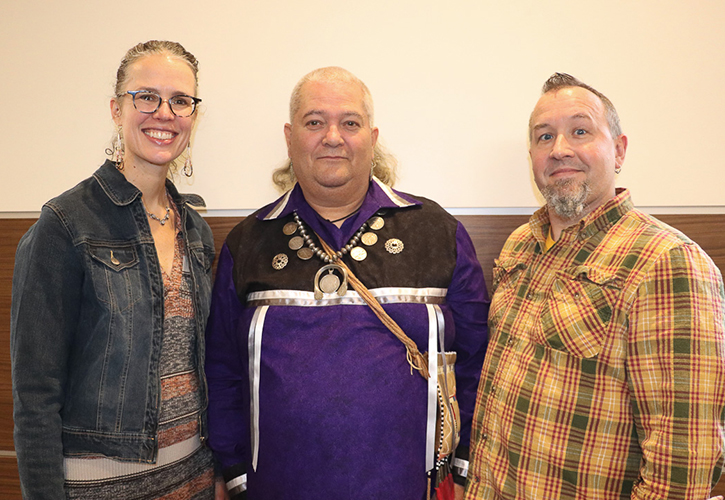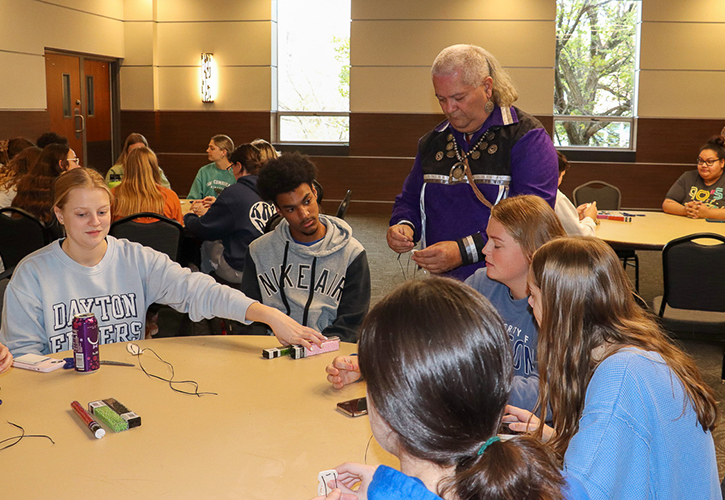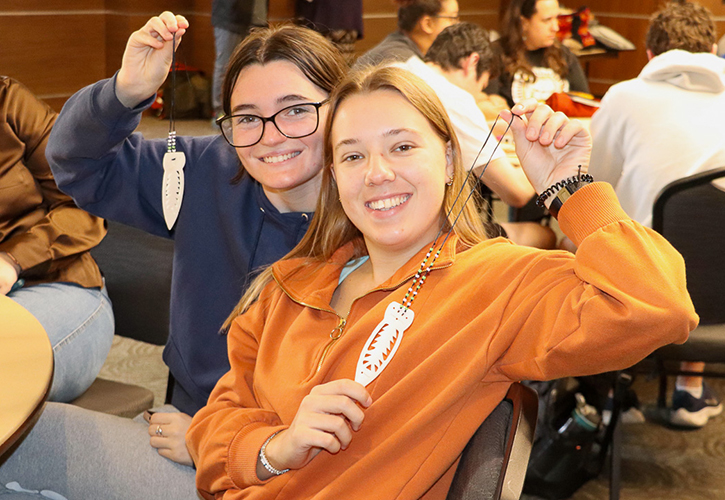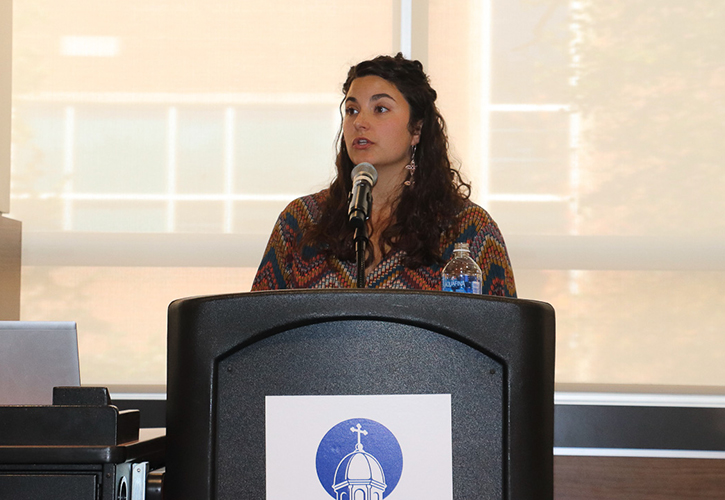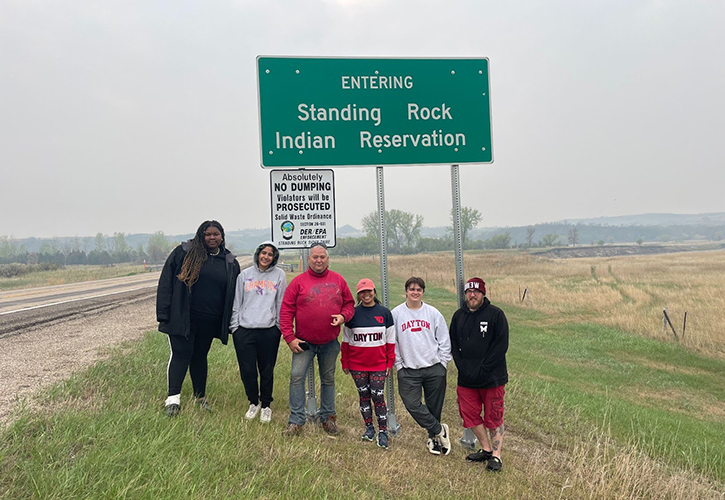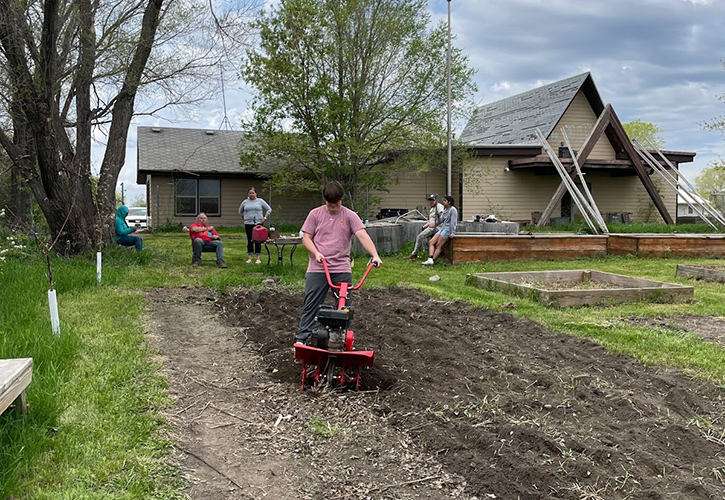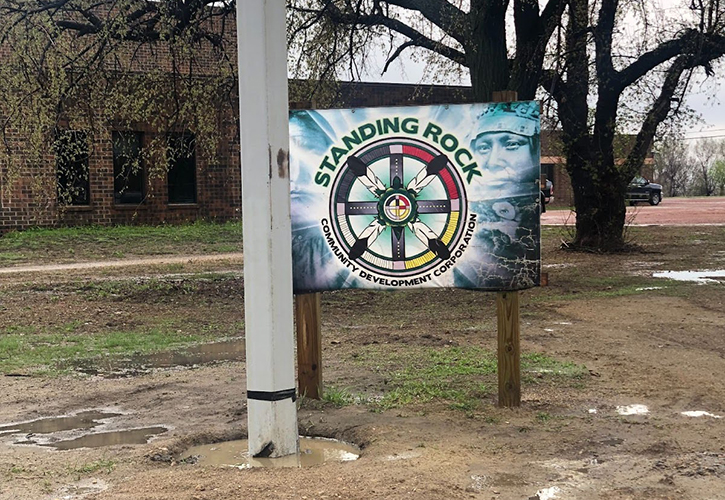College of Arts and Sciences Newsroom
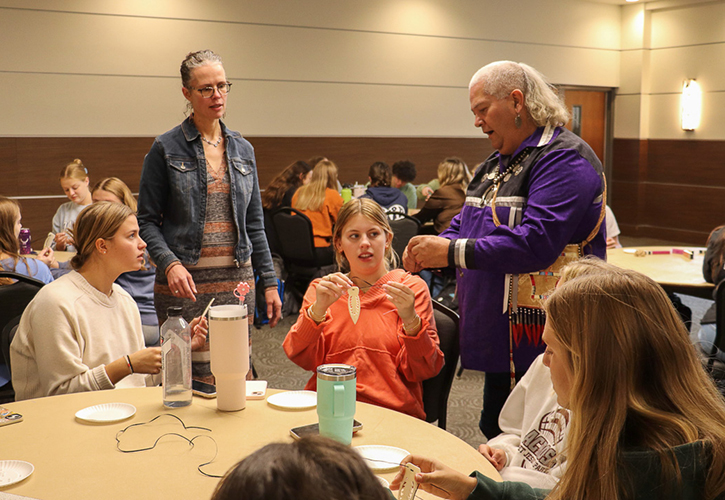
Standing Rock trip, campus colloquium connect students with Indigenous communities
By Dave Larsen
The University of Dayton’s efforts to build connections with America’s Indigenous communities extend from campus to the Black Hills of South Dakota.
In May, Race and Ethnic Studies Program Director Tom Morgan brought five UD students to the Standing Rock Indian Reservation, which straddles the North and South Dakota borders, for a 10-day cross-cultural immersion in which they helped butcher a buffalo, clean up a cemetery and build a greenhouse.
In November, Morgan co-chaired the 2023 Native Peoples of the Americas Colloquium on UD’s campus. Launched in 2000, the colloquium is an annual gathering that shines light on Indigenous peoples’ history, culture and spirituality through presentations, performances and workshops.
This year’s event focused on the “Indigenous Miami Valley” and featured activists, academics and artisans who are advancing native cultural continuance in the Dayton area, which was the homeland of the Osage, Miami and Shawnee nations.
“Today we are gathered on the unceded land of these people,” said Morgan, associate professor of American and African American literature, during his opening remarks. “I ask you to acknowledge these communities, their elders both past and present, as well as future generations.”
This year’s event included a session with local Indigenous leaders and community members, who discussed engaging with native people to build a more inclusive future. Another session focused on the educational and research partnership between the Miami Tribe of Oklahoma and Miami University in Oxford, Ohio.
“We want to share to whatever extent we can the work of the Miami Tribe and the Myaamia Center at Miami University with our broader community,” said Kara Strass, the center’s director of Miami Tribe relations and an enrolled citizen of the Miami Tribe of Oklahoma. “Being able to give presentations like this one is a great opportunity to share that work, connect with people across our region and hopefully push this work forward in a variety of ways.”
The colloquium also featured two craft sessions for students with Leon Sam Briggs, an enrolled Tonawanda Seneca artisan of the Hawk Clan, who has visited UD regularly since 1998. He taught students how to make a bone eagle feather necklace and an amulet bag.
Briggs also engaged with Morgan’s students during their May trip to Standing Rock. He has welcomed UD students to the reservation since 1999, when retired communication lecturer Mary Anne Angel started making regular trips there.
“I am educating the future educators, and trying to get a lot of the historical trauma and issues corrected,” Briggs said. “Working with college students who are going to be teaching or working, that is my biggest goal.”
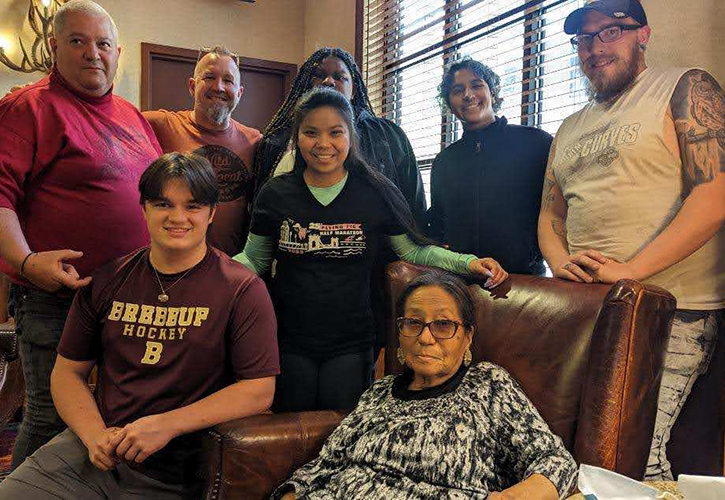
Briggs said the cultural immersion at Standing Rock takes students out of their comfort zones. He brings students to places, including sacred and historical sites, that as non-natives they would never get to see.
“A lot of these students have gone through and done things they never would have done in their life, and they were happy and proud because it was life-changing to do the stuff that we did and see they made a positive change for somebody,” Briggs said.
One example from May was the buffalo hunt and community meat distribution.
“We missed the hunt part, which was fine,” Morgan said. “It probably would have been more than some of our students were ready to deal with.”
Morgan and the students helped process the carcass into stew meat and buffalo burger, and packaged the meat with a vacuum sealer for community members. They also attended a workshop on how to make bison soup.
Before embarking on the two-day, 1,200-mile drive to Standing Rock, the students took an eight-week mini course during the spring semester to learn about the reservation and the Dakota, Lakota and Nakota people of the Sioux Tribe.
In addition to Briggs, they engaged with the Rev. John Floberg, rector of three Episcopal congregations serving Standing Rock; Phyllis Young from the Lakota People’s Law Project; and Crystal Weasel from Wozu, a tribal nonprofit whose mission is to create a lifeline to the land connecting past and future generations.
“Going on this trip helped me learn about the Indigenous community, which sparked questions about the lack of human rights on reservations,” said Ximena Silva-Aguirre, a senior human rights studies major from Cicero, Illinois. “I hope to do some type of internship for one of the organizations we were introduced to on the trip.”
For more information, visit the Race and Ethnic Studies program website.
Top photo: Leon Sam Briggs, an enrolled Tonawanda Seneca artisan of the Hawk Clan, works with UD students at the 2023 Native Peoples of the Americas Colloquium. Middle: UD Students at Standing Rock Indian Reservation for a 10-day cross-cultural immersion.

